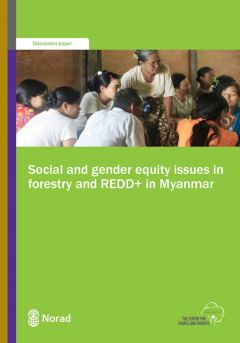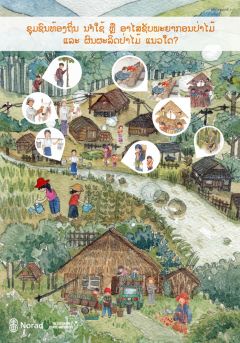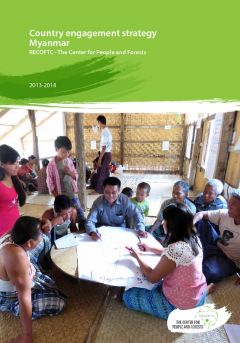Location
RECOFTC
RECOFTC is derived from an abbreviated form of the organization's legal name, Regional Community Forestry Training Center for Asia and the Pacific. Formerly the organization was known as RECOFTC – The Center for People and Forests.
RECOFTC – The Center for People and Forests is an international not-for-profit organization that focuses on capacity building for community forestry in the Asia Pacific region. It advocates for the increased involvement of local communities living in and around forests - some 450 million people in Asia-Pacific - in the equitable and ecologically sustainable management of forest landscapes.
The Regional Community Forestry Training Center for Asia and the Pacific (RECOFTC) opened in Bangkok, Thailand, in March 1987 with support from the United Nations Food and Agriculture Organization, the Government of Switzerland (through the Asian Development Bank), and Thailand's Kasetsart University.
Community forestry is widely acknowledged as a powerful solution for many of the challenges facing local people and the wider society, especially in improving rural livelihoods, enhancing community governance and empowerment, transforming forest-related conflict, protecting and enhancing the environment, and helping to fight climate change. As a capacity-building organisation, RECOFTC improves the ability of people and organisations to conduct community forestry effectively and sustainably.
RECOFTC works toward its mission through four thematic areas:
- expanding community forestry
- people, forests and climate change
- transforming forest conflict
- securing local livelihoods.
Members:
Resources
Displaying 161 - 165 of 485Social and Gender Equity Issues in Forestry and REDD+ in Myanmar
RECOFTC and partners recently conducted a national-level expert panel discussion in Myanmar on gender mainstreaming in national forestry and REDD+ initiatives.
Posters for grassroots communities in Lao PDR on gender and climate change
RECOFTC’s Grassroots Capacity Building for REDD+ project in Lao PDR is launching five new posters on gender mainstreaming in climate change (CC) and sustainable forest management (SFM). The posters are produced in Lao language and serve as a tool for local facilitators in their activities to raise awareness and generate discussions among local communities on these issues.
Delivering Impacts for People and Forests in Asia: Annual report October 2013-September 2014
Building on a very successful previous strategic phase, RECOFTC’s new Strategic Plan (2013-2018) has completed its first year with many exciting outcomes. RECOFTC's Annual Report 2013-2014 highlights progress in our four thematic areas: Securing Community Forestry; Enhancing Livelihoods and Markets; People, Forests and Climate Change; and Transforming Forest Conflicts.
RECOFTC Country Engagement Strategy - Myanmar
About 32 million ha, half of Myanmar’s land area, is classified as forest area. Most of the 20 million ha of other wooded land is fallow land used by villagers for shifting cultivation. About 20 to 25 million people out of a total population of 60 million are estimated to use forests as one of their sources of livelihoods.
Democratising Forest Business: A Compendium of Successful Locally Controlled Forest Business Organizations
Forests worldwide are home to approximately 1.3 billion people and must cater to the multiple needs of people - from providing local goods and services (access to income, food, clean water, wood energy, construction materials, fertile soils, medicinal and cosmetic products, and recreation) to providing global goods and services (climate change mitigation, biodiversity conservation, hydrological and mineral cycles). It is a tall order because many of these needs compete with one another.






